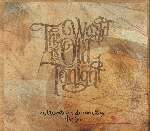History of the traditional Irish carol "Wexford Carol"
Taken from this website where the full description can be found at: Your Irish Traditions
"Thought to have
originated in Co. Wexford, hence its name, many traditions have arisen around
the poem and song for example it was said that only men should sing it and this
seems to have been the way for many years for example it has been sung by the
likes of Tom Jones and the Mormon Tabernacle Choir although since regaining
popularity in the 1990’s it has been sung by women like Alison Krauss and Julie
Andrews.
Putting an exact date
on the origin of this Carol is difficult as although it is also sung in Irish
the words seem to be translated from the English version and it seems unlikely
that an Irish worded Carol would originate from English speaking Co. Wexford.The Wexford Carol is also known as the Enniscorthy Carol, this is due to Dr. William Henry Grattan Flood (1857 – 1928) who was the organist and music director at St. Aiden’s Cathedral, Enniscorthy, Co. Wexford.
He was said to have
transcribed it from a local singer and had it published in the year of his
death in 1928.
After publication it was quickly included in Carol collections all around the world, giving it, its popularity today.
After publication it was quickly included in Carol collections all around the world, giving it, its popularity today.
The Wexford Carol has
often been associated too with Bishop Luke Waddings of Ferns and his collection
of Carols, The Kilmore Carols first published in 1684, long before Dr. Grattan
Flood’s translation.
Bishop Waddings, whose
family came from Ballycogley Castle Co. Wexford, was the Roman Catholic Bishop
of Ferns from 1683 – 1692 and lived in Wexford town whilst he was a bishop,
possibly where he first heard The Wexford Carol.
Whether it was
published in 1648 or 1928 it is undoubtedly a beautiful Carol and today is
still widely sung as part of a traditional
Irish Christmas."
Beautiful version sung by Alison Krauss accompanied by Yoyo Ma
My dulcimer version video Janene Millen - Wexford Carol
My song sheet Wexford Carol PDF SONG SHEET
My "version" of tablature is minimal and it helps if you are already familiar with the melody because I don't use musical notation. The melody is documented with the chords hi-lighted in yellow...which is primarily all I play while singing. I play fingerpicked melody for musical breaks. I've split the song into PART A melody, and PART B melody to indicate what I am using for the brief breaks between verses. I play the entire song, instrumental only...after the 3rd verse and to finish the song.
I am basically strumming or 3 finger plucking the chords with occasional linking notes while singing. I try to not play the melody underneath the singing....PLUS, it's easier!
I like to make a "map" of the song (on the song sheets) when I'm singing it, to help me remember what I settled on, as a final version. V1 = verse 1, V2 = verse 2, instrumental breaks etc.


